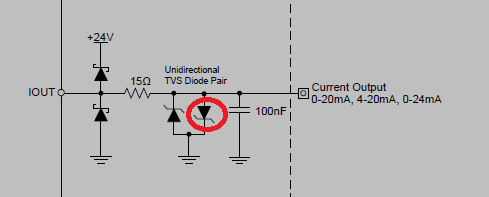why are there two TVS diodes in typical application circuit of page 36? The right TVS is turned on, and the IOUT is shorted to the ground. The IOUT cann't ouput 4-20mA, can it?
-
Ask a related question
What is a related question?A related question is a question created from another question. When the related question is created, it will be automatically linked to the original question.



